18. Glazed over
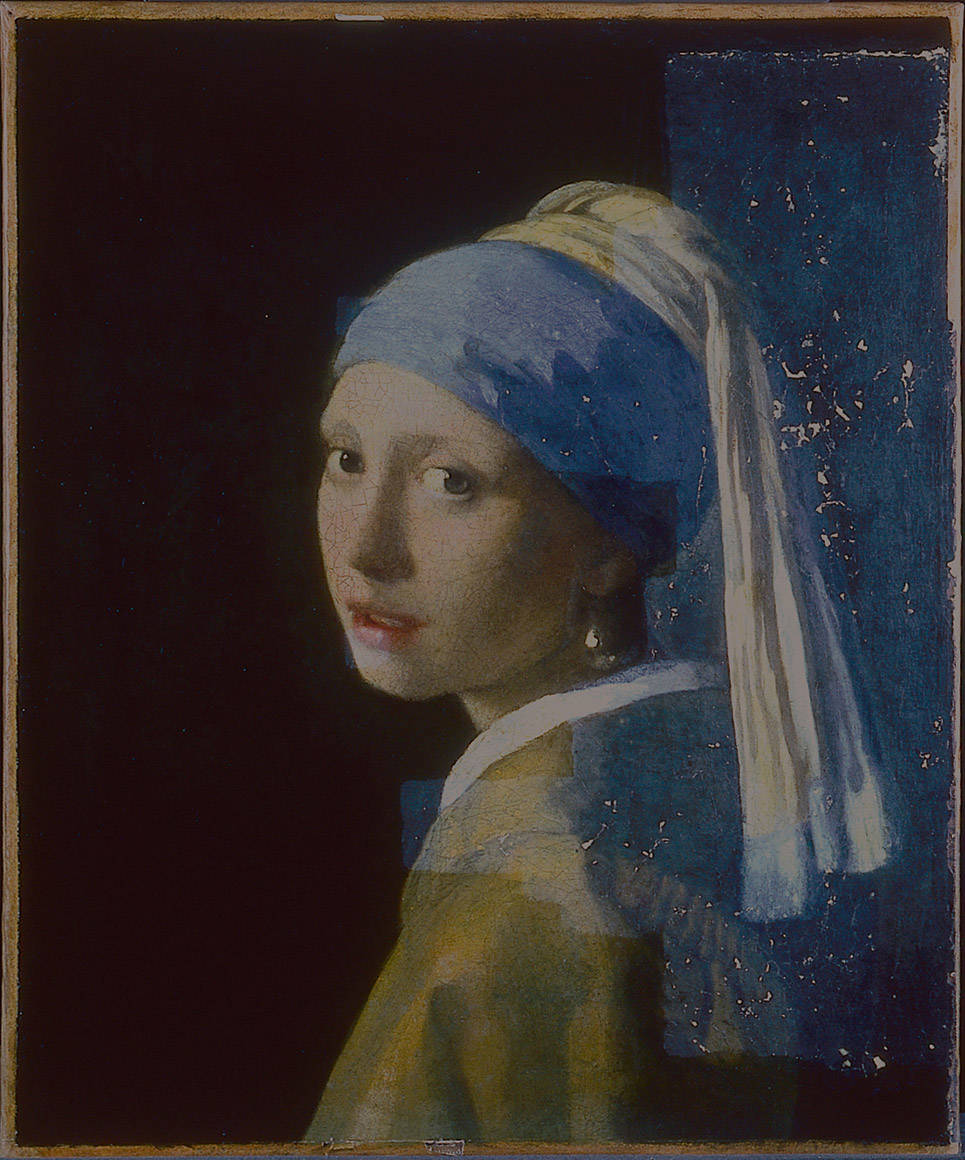
The Girl’s pearl earring isn’t the only part of the painting that looks like it is semi- translucent, as if you can almost see right through it. In traditional painting technique, artists applied thin translucent glazes over opaque underlayers to modify their colour. The underlayers have good covering power, and reflect light. The glazes on top contain pigments that are translucent in oil, so light passes through them.
Certain pigments are especially suitable for glazing in oil, e.g. red and yellow lakes, copper greens, and ultramarine. Vermeer used glazes in two main areas of the Girl with a Pearl Earring: the background and her headscarf.
To find out about the thickness and transparency of the glazes in the Girl, Tom Callewaert from TU Delft scanned the painting in four sections using Optical Coherence Tomography. OCT was originally developed for the medical field to look at thin layers in the human eye. It has been adapted to look at glazes and other translucent layers (like varnish) on paintings. It takes a virtual ‘slice’ of these layers and displays them as if you are looking at them in side view, i.e. a visual cross-section. As the painting is scanned, an image on a screen shows the buildup of the translucent layers as horizontal bands. The brightness or darkness of the bands shows differences in the transparency of the layers.
Background
When Vermeer painted the background, it had a smooth, translucent green surface that was glossy like enamel. Over time, the dyes have faded and degraded, so some of this effect has been lost. Vermeer built the background up with two layers. First he applied a thin layer of charcoal black. Then when it was dry, he painted a deep translucent glaze on top. The colourants in this glaze – indigo (blue) and weld (yellow) are translucent in oil. The other components in the glaze – chalk, alum, lead white and a little red ochre – wouldn’t have done much to affect its clarity. Vermeer’s glaze is thicker than the varnish (which was applied during the 1994 treatment).
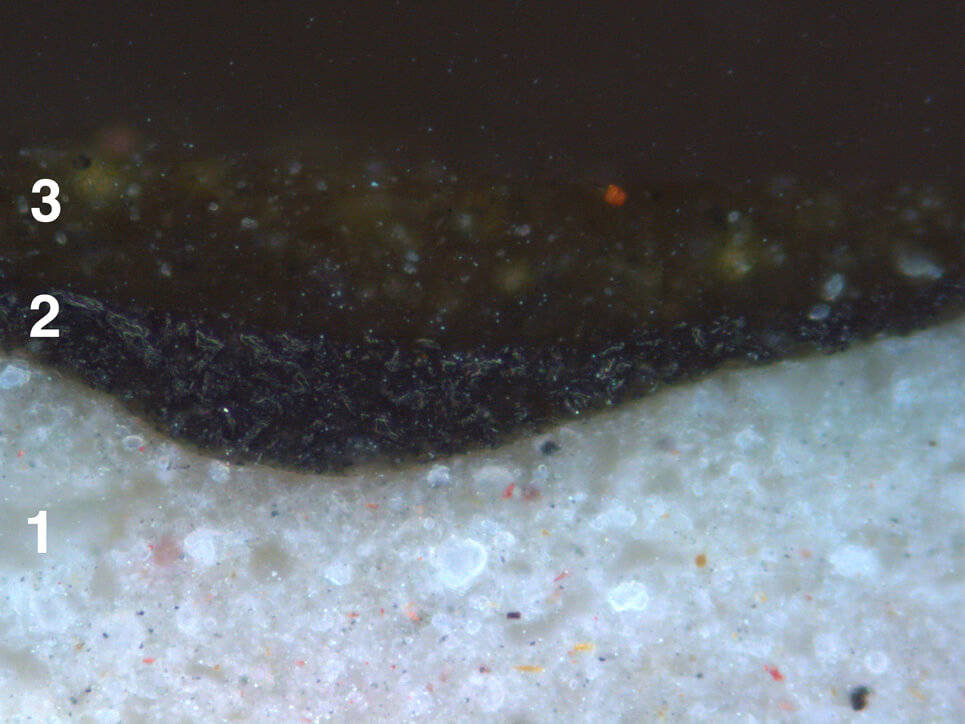
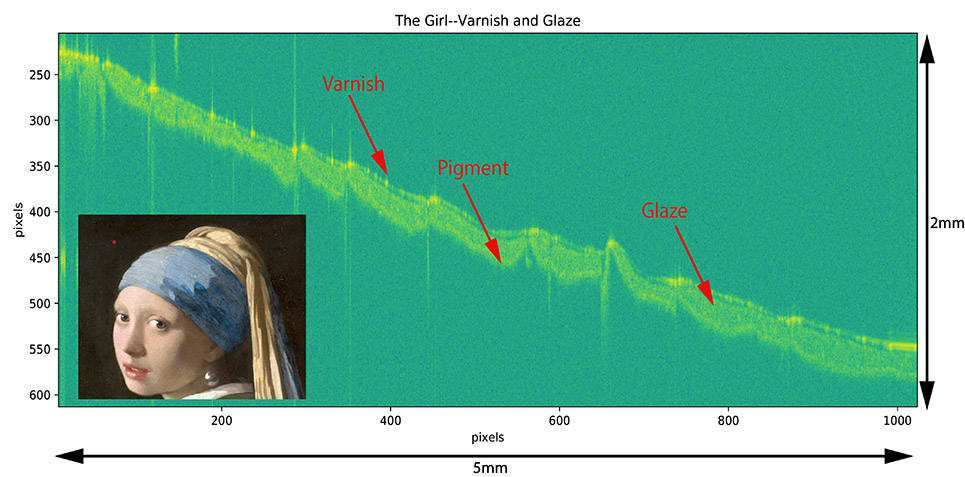
Blue headscarf
Yesterday you learned about ultramarine, the blue pigment that Vermeer used in the Girl’s headscarf. He painted the left side of her head in light blue layer to show where it faces the light. The right side in shadow is a darker blue applied on top of a dark underlayer. To unite the two sides and to give extra intensity, Vermeer applied a blue glaze in a zigzag shape over parts of both.
The ultramarine-containing glaze is transparent to the naked eye, and also transparent to infrared. This means that it seems to ‘disappear’ when we examine the painting with infrared reflectography and near-infrared imaging.
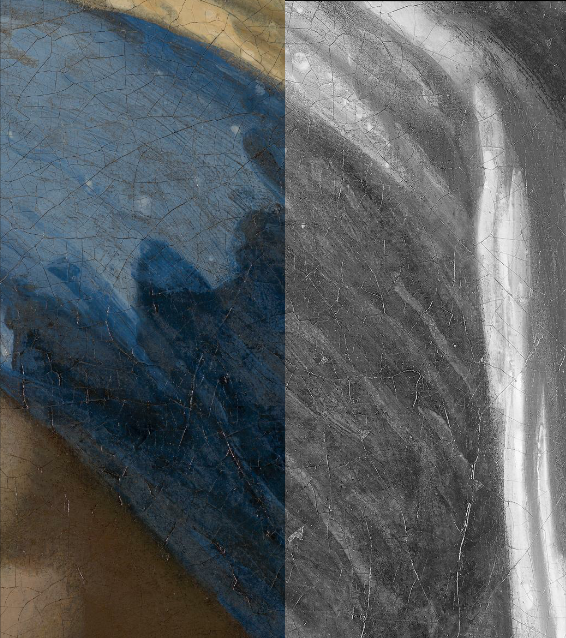
Lip gloss
On top of an underlayer of vermilion, Vermeer applied a layer of translucent red lake to the Girl’s lips. Under the Hirox 3d microscope, the glaze that extends slightly over her teeth appears pinkish, and some red lake is also mixed into the highlight on her lip in UV. The glaze is visible in the fluorescence false-colour image taken by the researchers from the National Gallery of Art, Washington.
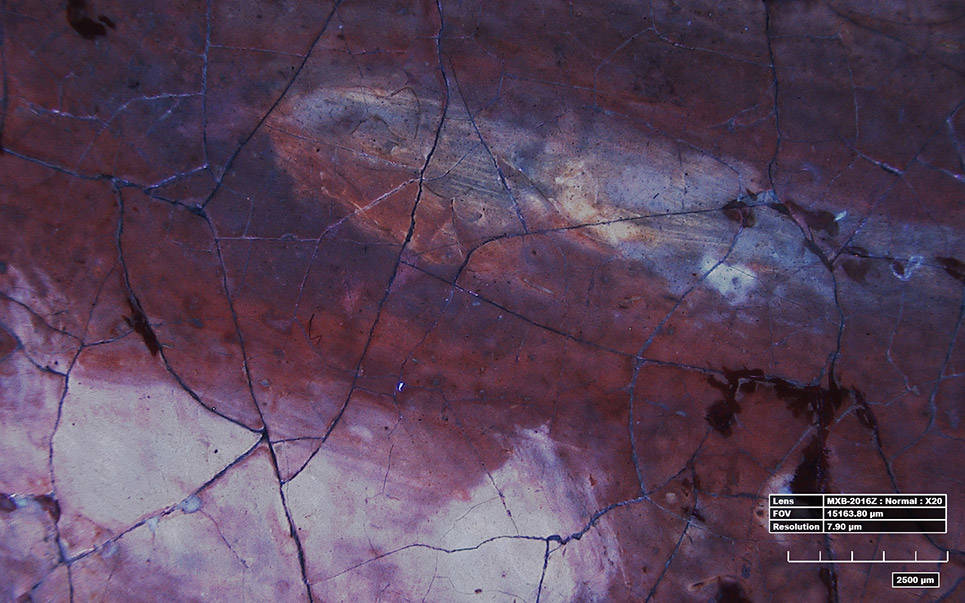
Varnish
Optical Coherence Tomography (OCT) didn’t only reveal the original glazes in the ‘virtual cross-section’. It also shows the varnish that conservators applied to the surface of the painting during the treatment in 1994. An isolating varnish was brushed on before the conservators filled and retouched the damages. It saturated the colours of the original paint. It also separated the original materials from the restoration materials, which would make it possible to remove any retouching in the future. At the end of the treatment, the painting was given a final varnish.
Varnish is applied to paintings to saturate the colours and protect the surface. Think of a pebble on a beach. When you pick it up out of the water, the colours are bright and saturated because the stone is wet. When it dries out, the surface is rough and the colours are dull and matte. The varnish on a painting is like water on a pebble.
Unfortunately, varnish layers often become yellow and brittle over the course of time and when exposed to UV rays. This is the reason why paintings are ‘cleaned’. Conservators remove old yellowed layers, and it is almost always varnish previously applied by other restorers. Nowadays we slow down the yellowing process by protecting paintings behind UV-filtering glass, and by choosing varnishes that do not change colour anywhere near as quickly as the ones used in the past.
Modern varnishes are usually made with a synthetic resin and a solvent. Hundreds of years ago, varnishes were made with tree resin heated in oil. You might be wondering whether Vermeer applied varnish to the Girl with a Pearl Earring after he painted it. Unfortunately, we don’t know. In our analysis so far, we have not been able to detect components that are definitely from an original varnish.
There is written evidence that 17th-century paintings were regularly varnished. This happened once they were thoroughly dry, and perhaps only if extra saturation was needed. We don’t know whether such a varnish was applied by the artists or by the person who owned the painting.
Around the time he painted the Girl, Vermeer owed money to the apothecary Dirck de Cocq. An inventory from the Delft Municipal Archives shows that Cocq’s shop sold ‘Venetian turpentine,’ which was – contrary to what the name suggests – not something that Vermeer would use to clean his brushes. ‘Venetian turpentine’ was a varnish made from larch resin. We can’t prove that Vermeer bought this kind of varnish from the apothecary, as his debt was for medicine.
Acknowledgements
- Optical Coherence Tomography: Tom Callewaert, Joris Dik and Jeroen Kalkman (TU Delft)
- Infrared photography: René Gerritsen (René Gerritsen Art & Research Photography)
- Near-infrared imaging: John Delaney and Kate Dooley (National Gallery of Art, Washington)
- Digital microscopy: Emilien Leonhardt and Vincent Sabatier (Hirox Europe)
